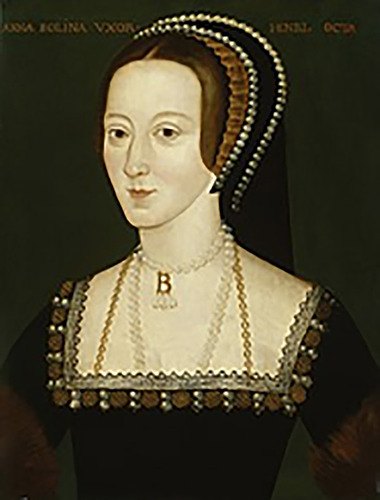
Anne Boleyn and the Missing Vicar
In the parish church there is a list of all the past Vicars of Steyning that we know of. The earliest entry dates from 1350 but those for the years between 1441 and 1535 are missing.Ninety years ago The Reverend Ernest Cox received a letter from a Mr. Lidbetter, saying that he believed that an ancestor of his had been Vicar of St. Andrew’s in the early years of Henry VIII’s reign. Cox loved to unravel Steyning’s history and his hopes were raised that he might be able to add a name to the list. A relative of Mr. Lidbetter had researched his family and left him an account of their ancestors in the 15th and 16th centuries – which included a reference to Steyning. This is the story he passed on to Mr Cox:
‘Back in 1405 one, Simon Ledbeter, married Rosa Swift. Their son was William who had some gift of necromancy [‘necromancy’ being described in a 1783 dictionary as ‘the practice of the black art of calling up the dead, enchantment and conjuration’]. ‘William’s sister married John Lake who adopted the name of Ledbeter.’
‘Their son, John, married Margaret. “John and Margaret Ledbeter had a little boy called Andrew, who rose to become one of the most learned clerks [or clergymen] of his day and was given the Cure [or benefice] of Steyning. He edited a work on Philosophy, wrote a treatise on Theology, various Essays on Nature and a book of Sermons.’
‘You can pick these up in some old curio shop when least expecting to do so.’ wrote the Reverend Lidbetter in 1929 – though a rather cursory scan of today’s ‘all-seeing’ internet tells us nothing about Andrew or his publications.
The story continued, ‘Andrew died comparatively young: but his fame had been brought to the notice of Henry VIII who promised him a high position if he would write a sonnet extolling his (Henry’s) charm. Andrew refused to do this, greatly to the indignation of his foolish but pretty wife, Tilly, who gave him no peace thereafter, and is said to have aided and abetted the King’s envoys in administering poison to poor Andrew when he returned to his country Vicarage.’
‘An inscription was put up in the choir of the Church by his sons on discovering a letter written by him (Andrew) when in death’s agonies. There is a rumour that, at the Court of Henry VIII a fair lady, Lady Margaret Beaulieu, pressed her attentions on this learned Clerk and that he fled, more to escape her allurements than meaning to offend the King. But he held the Court in deadly horror and wrote a statement to that effect; and he mentions in that letter the Lady Anne Boleyn as helping his escape from the Court.’
‘All of this can be proved by reference to ‘Ancient Histories’’ the account claimed.
No date for these events was provided but, if they took place before Anne Boleyn became Queen, then it must have been during her time at Court in the 1520’s. It is particularly interesting that Anne Boleyn, known for her protestant inclinations, should have befriended a cleric who, if he shared these views, could have risked being seen as a heretic. We need to find copies of his writings to judge whether this was so.
Ernest Cox was excited by the prospect of tracking down one of the missing Vicars. But he encountered problems. There was no mention of what the ‘Ancient Histories’ were that Lidbetter referred to and Cox couldn’t find any of Andrew’s publications. Moreover, delving into the Church chest, where all the old Steyning documents were kept, revealed nothing more. And, sadly, all the memorials in the choir, including that put there by Andrew Ledbeter’s sons, were lost when the original tower became unsafe and was demolished in 1578, before being rebuilt at the west end of the Church.
So, without proof, the list of vicars remains incomplete and makes no mention of Andrew Ledbeter.

